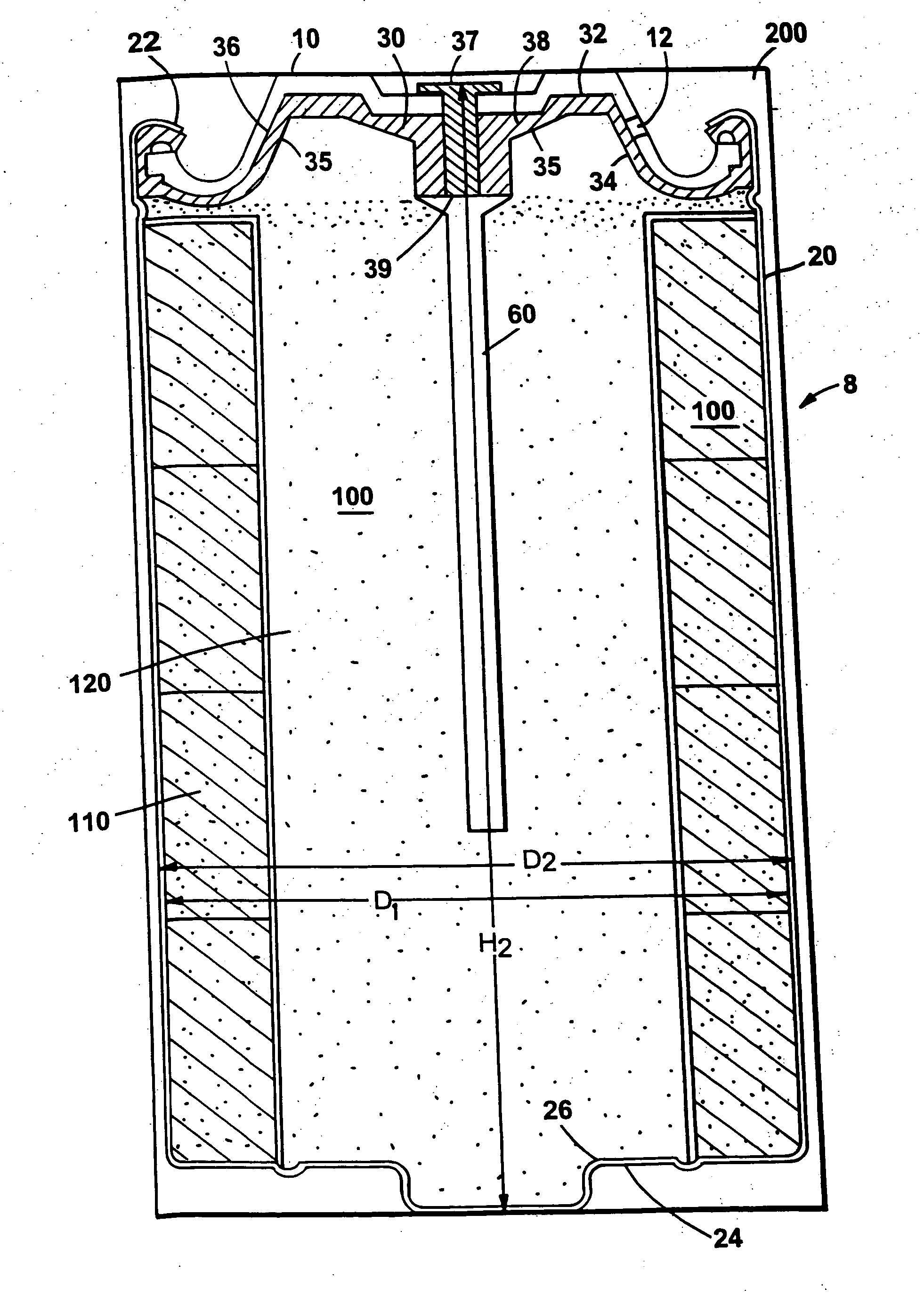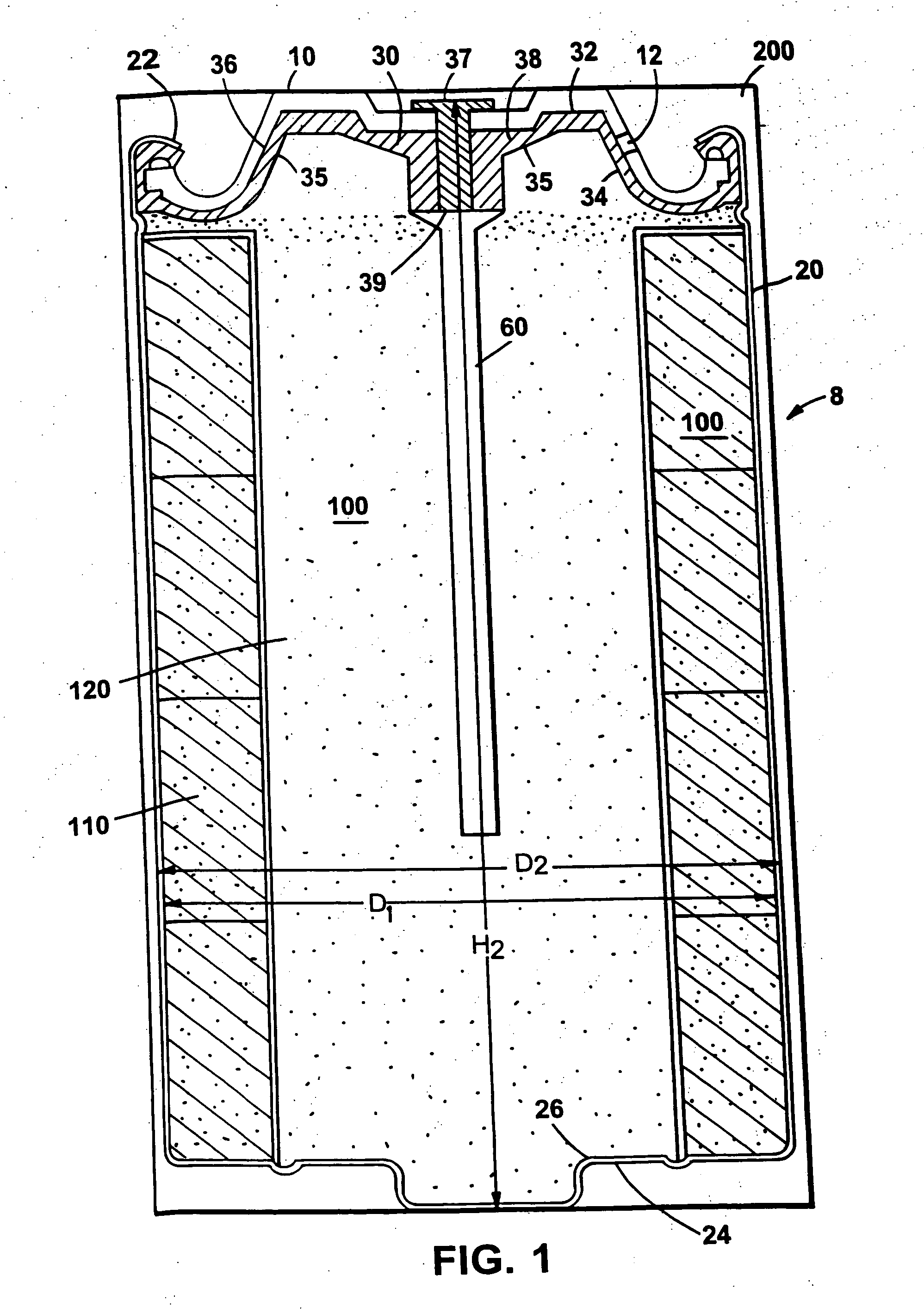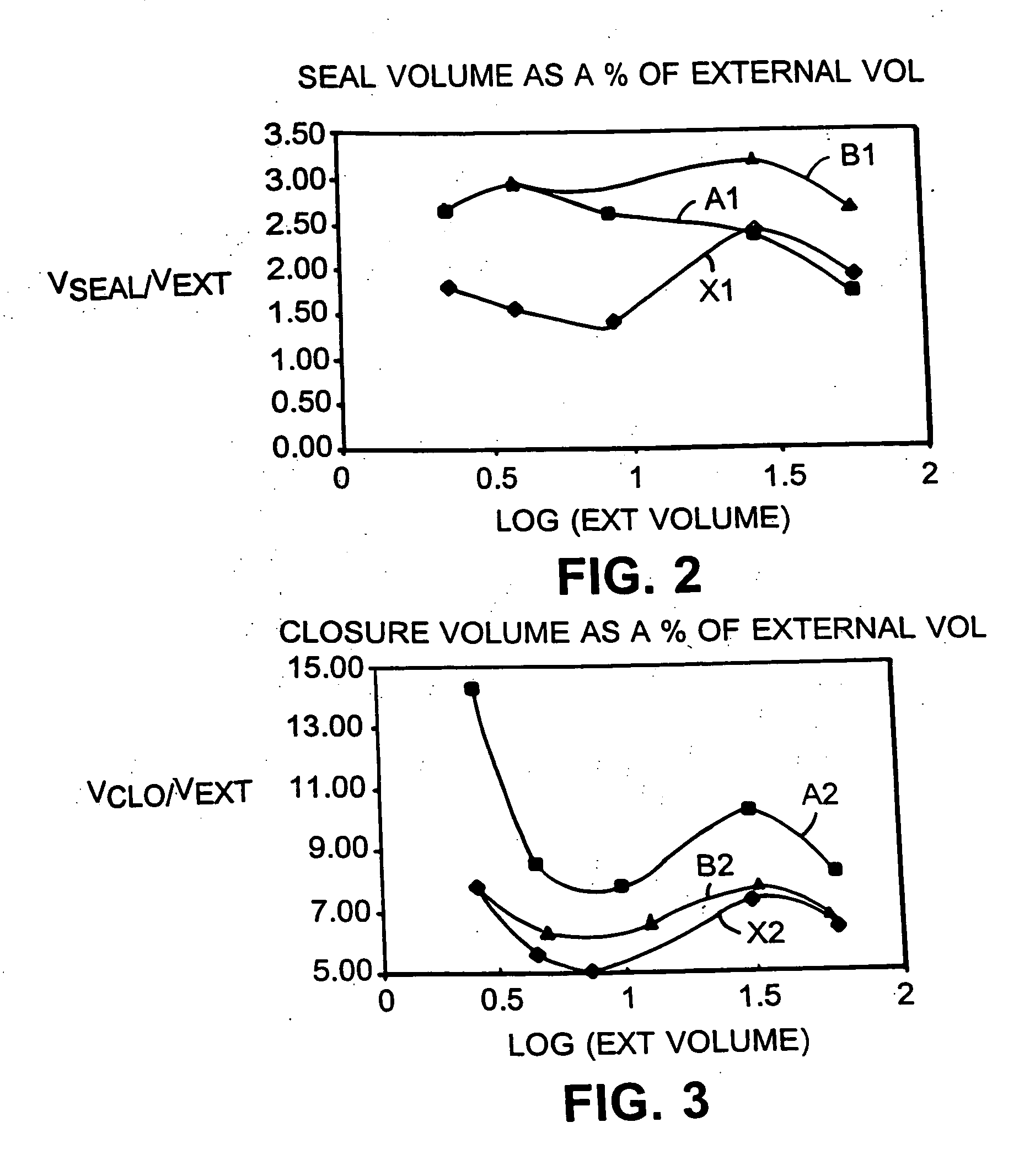Electrochemical cell closure
a technology of electrochemical cells and cell closures, applied in the field of electrochemical cells, can solve the problems of reducing the amount of cell housings, caps, seal materials, etc., and achieve the effect of high capacity, cell capacity can be increased, and high capacity
- Summary
- Abstract
- Description
- Claims
- Application Information
AI Technical Summary
Benefits of technology
Problems solved by technology
Method used
Image
Examples
examples 1-5
[0024] Table 1 lists some of the dimensions of the cell components used to prepare five different cell sizes. Example 1 is a D size cell, Example 2 is a C size cell, Example 3 is a AA size cell, Example 4 is a AAA size cell, and Example 5 is a AAAA size cell.
TABLE 1Example 1Example 2Example 3Example 4Example 5Internal Volume (cc)42.3619.686.282.891.65Overall Height (mm)60.3849.3750.1544.242Housing Outer Diameter32.9225.2113.9210.167.85(mm)Cell Closure Height (mm)17.997.624.574.254.15Can Wall Thickness (mm)0.250.250.230.2030.203Pip Thickness (mm)0.250.250.250.2030.203Cathode Height (mm)47.841.3542.638.4234.65External Cell Volume (cc)56.49526.9568.3393.8532.299log10 (External Volume)1.75201.43060.92110.58580.3615Cell Diameter (mm)34.226.614.510.28.3Closure Volume (cc)3.6051.9730.4320.2180.18Seal Volume (cc)1.0560.6620.1180.0600.041Seal Volume / External1.872.461.421.571.79Volume (%)Closure Volume / External6.387.325.185.667.83Volume (%)Internal Volume / 74.9873.0175.3175.0171.77External V...
examples 6-11
[0031] A set of cells was prepared selecting cell closures and insulating seals having smaller volumes than in Examples 1-5. For example, the AA size cell seals were thinned from a volume of 0.432 cubic centimeters to a volume of 0.120 cubic centimeters. In Examples 6 and 7, the larger volume seals had the structure described in U.S. Pat. No. 5,080,985 and U.S. Pat. No. 5,750,283. In Examples 8-11, the smaller volume seals had the structure describe in U.S. Ser. No. 09 / 047,264, filed Mar. 24, 1998. In general, the seal volume was reduced by lining the seal up against the end cap, as depicted in FIG. 1, so that the cap can support and replace thick structural areas of previous seal designs. The seal depicted in FIG. 1 represents the general design of the family of seals used in Examples 8-11.
[0032] The cans of Examples 6 and 7 were 0.010 inches thick. The cans of Examples 8-11 were 0.008 inches thick. In the AA cells (Examples 8 and 10), the cans were 0.203 mm thick. In the AAA cell...
PUM
| Property | Measurement | Unit |
|---|---|---|
| diameter | aaaaa | aaaaa |
| diameter | aaaaa | aaaaa |
| diameter | aaaaa | aaaaa |
Abstract
Description
Claims
Application Information
 Login to View More
Login to View More - R&D
- Intellectual Property
- Life Sciences
- Materials
- Tech Scout
- Unparalleled Data Quality
- Higher Quality Content
- 60% Fewer Hallucinations
Browse by: Latest US Patents, China's latest patents, Technical Efficacy Thesaurus, Application Domain, Technology Topic, Popular Technical Reports.
© 2025 PatSnap. All rights reserved.Legal|Privacy policy|Modern Slavery Act Transparency Statement|Sitemap|About US| Contact US: help@patsnap.com



